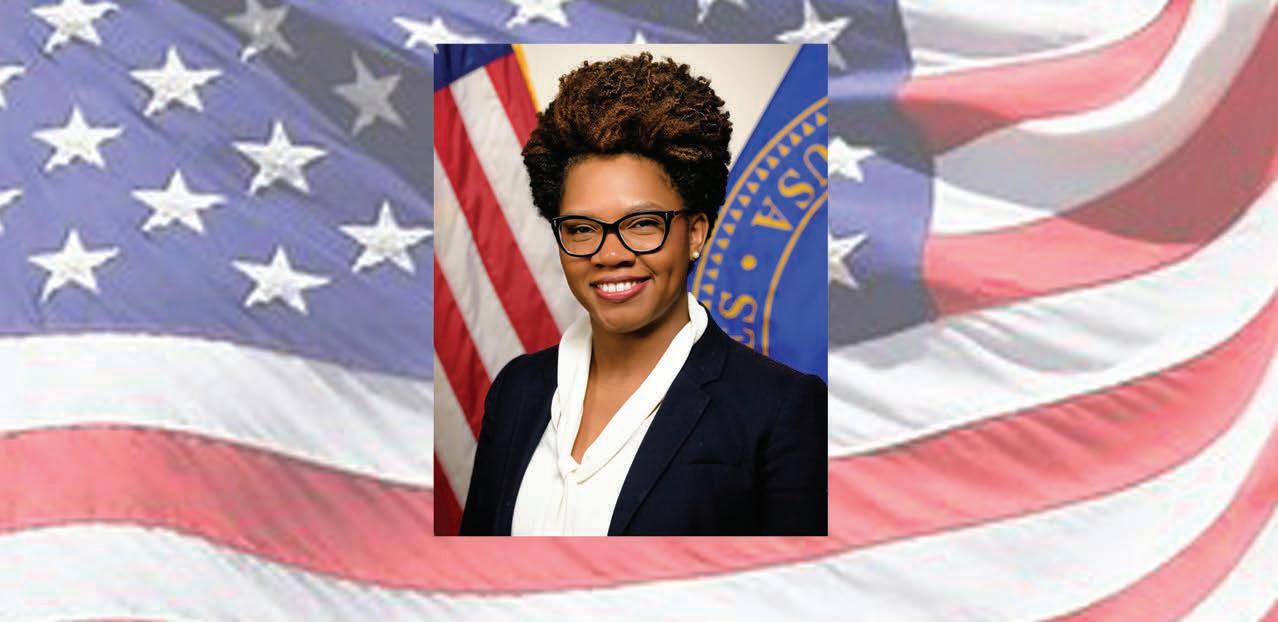
4 minute read
Insights: Scope of Practice
from HWRCs' Annual Report
by UAlbany
Insights

Advertisement
Collaborative, Timely, and Important Contributions from HRSA’s Workforce Center Directors
In Spring 2020, the directors of the HRSA workforce centers, together with the Center for Interdisciplinary Health Workforce Studies at Montana State University, came together to author two articles that were published as perspectives in the New England Journal of Medicine. Perspective articles focus on providing timely comments on relevant topics in health care and medicine in a brief and accessible style. The two publications refl ected the experiences of the 7 authors who found their collaboration sparked by common concerns about issues aff ecting the nation’s health care workforce and the delivery of health care.

20 The fi rst issue focused on describing how state regulations governing the scope of practice of health professionals are counterproductive. At a time when health care delivery systems across the country are trying to experiment with new ways to increase access to health care, their ability to innovate is often handcuff ed by restrictions
By Peter Buerhaus, PhD, RN, FAAN Director, Center for Interdisciplinary Health Workforce Studies, Montana State University, Bozeman permit a clinician to provide all the services they are educated and competent in providing. “At a time when health care delivery systems across the country are trying to experiment with new ways to increase access to health care, their ability to innovate is often handcuff ed by restrictions imposed by state regulatory agencies, or even by their own institutional history, that unnecessarily limit the practice of many professionals.” This constrains the ability of health care systems to innovate and also limits the capacity to increase access to care, lower costs, provide more care in community settings, and increase the value of the care provide by health professionals. The perspective article off ered strategies and specifi c actions that policy makers and organizations could pursue to modify existing restrictions so that the nation’s health care workforce can be used more wisely and productively than it is currently. Shortly after this perspective was published on February 13, 2020, the COVID-19 pandemic began to dominate the attention of the media, health care delivery organizations, and federal and state public leaders. By the second week of March, it had become clear that the Corona virus was threatening New York City and concern began to grow over the realization that other “hot spots” would likely develop throughout the nation. All of us became familiar with a new term “social distancing” and our lives changed suddenly and profoundly. These developments were not lost on the author team of workforce directors who put their minds and writing pens together and quickly prepared a second article for the New England Journal of Medicine. At the time, most of the media and imposed by state regulatory agencies, or even by their own institutional history, that unnecessarily limit the practice of many professionals. That is, such restrictions do not

(...Continued from page 20)
government policy attention was directed at ensuring personal protection equipment and ventilators. The author team, however, focused on longer term issues and off ered fresh ideas for hospitals and other health care organizations, educators, and government leaders on how the nation’s health care workforce could be “surged” and sustained over the course of the pandemic. Ideas ranged from how to ensure enough respiratory therapists, avoiding bottlenecks in the education pipeline, and removing regulatory restrictions that unnecessarily aff ected the use of health professionals. The article was published on April 8, 2020.
What makes these two publications notable is that they were written by the nation’s health workforce leaders—smart, experienced, balanced and empirically oriented people who united as a group with a shared purpose and plenty of determination. Early on in the writing process, I believe, there was a realization of the truth to the saying “The whole is more than the sum of its parts”, and a realization that when the leaders of the HRSA workforce centers come together and convey messages in a prestigious journal, there is a good chance that people, policy makers, and the media will pay attention. More importantly, the topics that brought this team together—scope of practice restrictions and preparing the nation’s health workforce for the pandemic—were exactly the areas where the author team had something important and timely to communicate. Acting on the suggestions off ered in these two publications could help strengthen the nation’s health care workforce and, in turn, improve the nation’s health care delivery systems.
Read the Publications:
Frogner BK, Fraher EP, Spetz J, Pittman P, Moore J, Beck AJ, Armstrong D, Buerhaus PI. It’s Time to Modernize Health Professions Scope of Practice Regulations. New Engl J Med. 2020;382(7):591-593. DOI: 10.1056/NEJMp1911077.
Q & A

How do you work with licensure boards to collect and share data?
Relationships are key. Licensure boards are important partners in health workforce data collection, but their main priority is regulation to protect patient safety. They often don’t have resources (ie, funding, staff , time) to collect additional data, and in some states, current legislation restricts their ability to share data.


Show the boards the value of collecting additional workforce data as it relates to evidencebased regulation, and look for ways to minimize their burden, especially during the initial development period. Treat them as a valued partner and bring them into the conversation very early to build trust.










